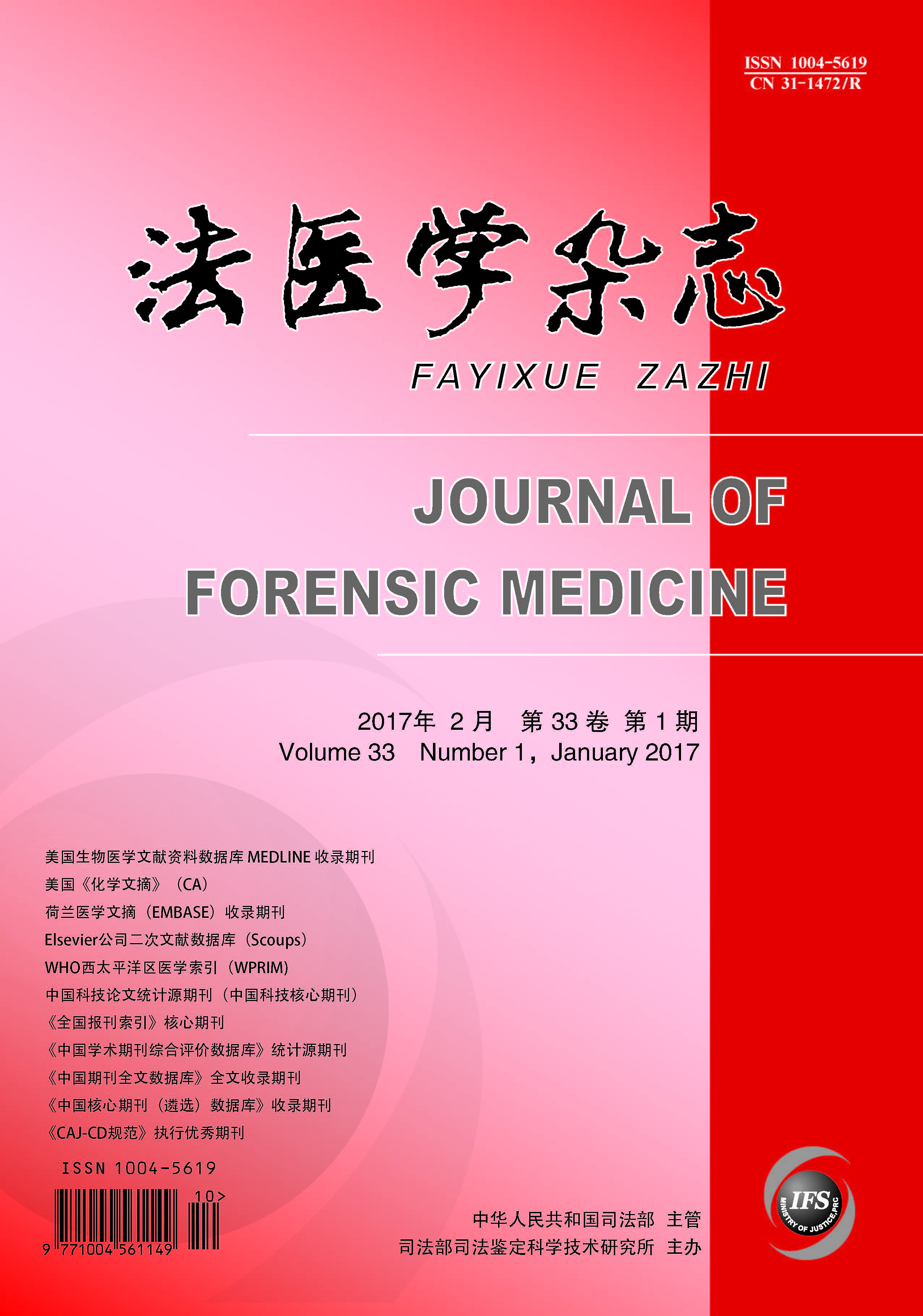|
|
Comparison of the Skin and Skeletal Muscle Contusion in Rats Induced by Blunt Force with Different Heights
BAI RU-FENG, Lü XIAO-JIAO , E XIAO-FEI, ET AL.
2017, 33(1):
1-5.
DOI: 10.3969/j.issn.1004-5619.2017.01.001
Abstract: Objective To explore the differences in the repair process of skin and skeletal muscle after contusion caused by blunt force attack with different heights. Methods Three degrees of contusion were performed on SD rats’ right hind limbs by a designed free-dropping device falling from 15, 30 and 50 cm heights, which as a main consideration factor for degree of injury. The repair process of skin and skeletal muscle at 6 h, 24 h, 3 d, 7 d and 13 d after contusion were observed using routine histological methods. Results Hematoma within skin and/or muscle was found in the rats’ hind limbs after contusion with three different heights. The repair processes were similar at 24 h after contusion. However, with the increase of height, the display degree was more obvious. At 3 d after contusion, the RBC of the hemorrhagic region would be decomposed and elapsed in 15 cm contusion group, but for 30 cm contusion group, it delayed to 7 d. At 13 d after contusion, the similar result was found in 15 cm and 30 cm contusion groups, in contrast, the 50 cm contusion group was still in the proliferative phase. Conclusion With the increase of height, the occurring rate of hematoma within skin and muscle at the same time increases, and the more serious histological appearance after contusion, including inflammation and proliferation, the longer healing process are observed. According to the results of present study and considering forensic application, the contusion model with 50 cm height (2.58 J/cm2) is recommended as the experimental animal model for the future study of wound age estimation on contusion.
Related Articles |
Metrics
|


